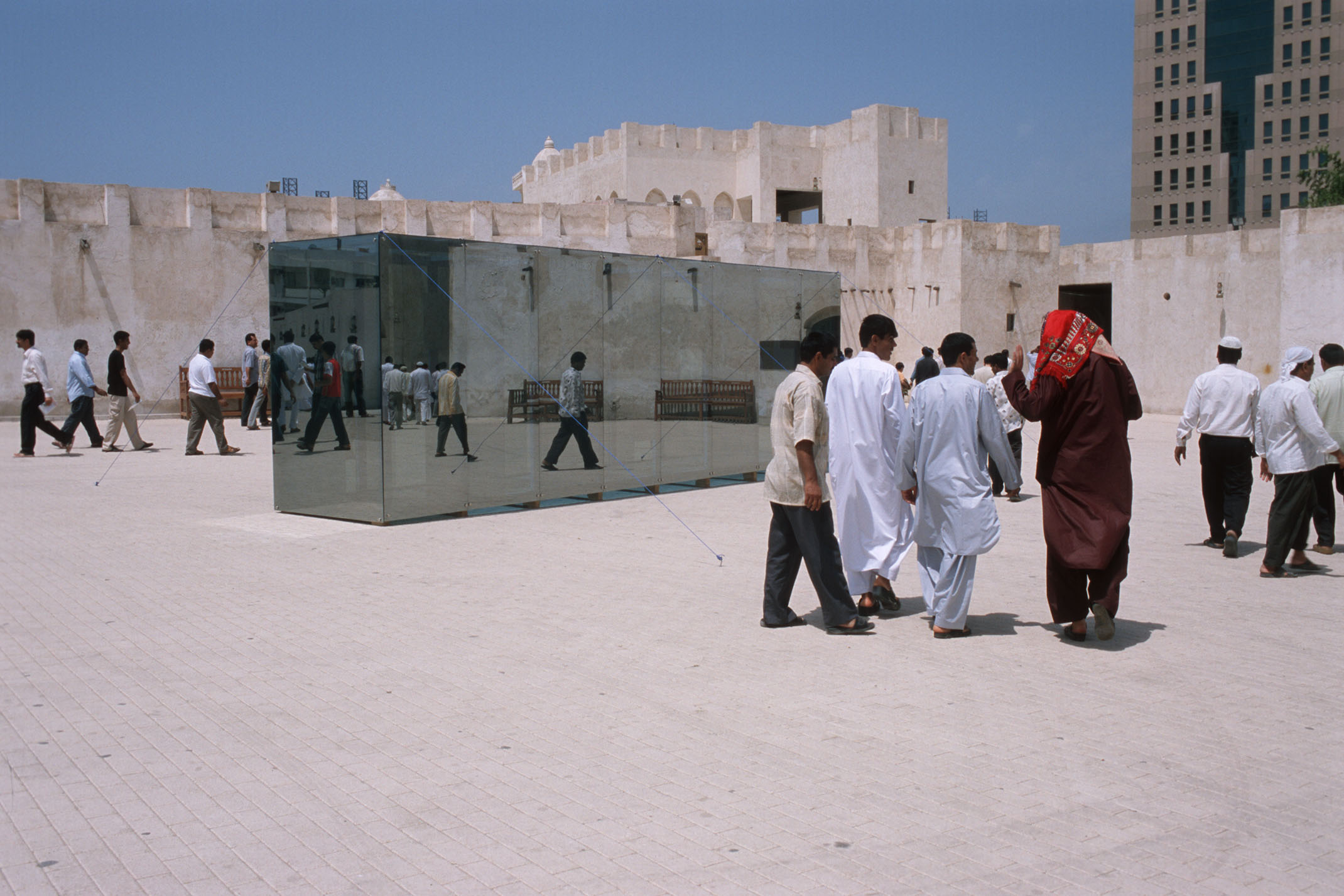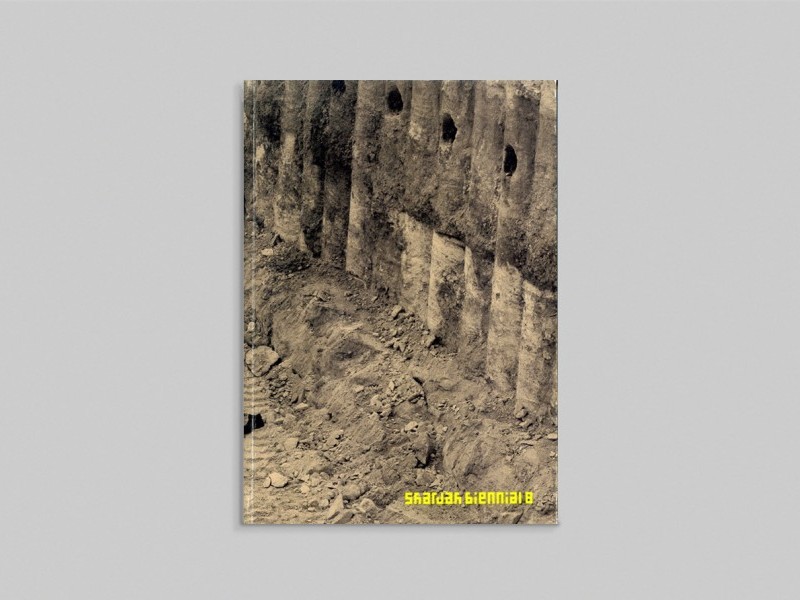
MIR AGE 07, 2006/2007
Susan Hefuna
MIR AGE 07, 2006/2007
Reflective glass billboard
Courtesy of the Third Line Gallery, Dubai
search


Susan Hefuna
MIR AGE 07, 2006/2007
Reflective glass billboard
Courtesy of the Third Line Gallery, Dubai
In November 2006, as I was flying back from Dubai to Frankfurt, images appeared in my mind: buildings, grid structures, high-reflecting glass, in blue and green everywhere. I remembered a big billboard with an advertisement; the 3- dimensional billboard becomes a building in itself – a big photograph of a landscape, mountains, a street, all mounted on that billboard.
In December 2006, I saw the 3-dimensional billboard in Dubai again: an advertisement for Dubai Properties and Porsche Towers. Inspired by the billboard, I decided to install a glass building, 800 cm wide, 250 cm high and 150 cm deep, made of high-reflecting blue glass; the installation will be at a crossroads in the Heritage area of Sharjah. Only a part of the building will be transparent, the letters reading: MIRAGE 07. The crossroads where people usually walk will be blocked by this alien, reflecting-glass building.
In the museum I will present “Photographs”, a kind of documentation of the trip through Sharjah in December, searching for crafts people. Finally we arrive at a cultural centre in Diba. Leaving Diba, I retain the image of the plastic trees inside the building of the cultural centre in my mind. My photographs will show, for example, the afas (a basket made of palmwood) in Sharjah and, next to it, photographs of afas structures I took a week later in Cairo and Alexandria.
The Egyptian afas is for me a modern, innovative design object with multiple functions, used for the transportation of fruits, bread, vegetables, and animals. On the street it becomes a table to display the fruits or bread for selling. The photographs capture the afas also amongst the garbage in Cairo streets, as well as showing the location where they are made by a craftsman, who is in fact blind.
I have observed these structures since my childhood. I used to see them everywhere on the streets of Egypt and for the last ten years I have wondered why they are still made of palmwood, without the use of any nails or glue. Why have they not yet been supplanted by plastic baskets, like, for example, the clay water bottles supplanted by plastic ones? Why have the horses and donkeys disappeared completely from Cairo’s streets, which today, exceeding all pollution levels, are packed with cars, and human beings gasping for breath?
For some time, though, I have become aware that more and more afas are being replaced by baskets made out of plastic. On the streets of Egypt, the palmwood is slowly disappearing.
This project was part of Sharjah Biennial 8.

This catalogue accompanied Sharjah Biennial 8, which attempted to renegotiate the relationship between art and ecology into a system of cohabitation.

The second book in the Still Life: Art, Ecology and the Politics of Change series, documents Sharjah Biennial 8 as it was on view.